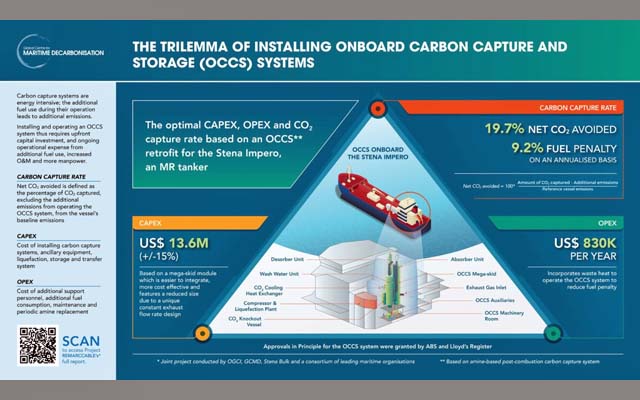The Global Centre for Maritime Decarbonisation (GCMD) recognises that international shipping faces increasing pressure to reduce GHG emissions in order to meet the IMO targets.
While low- and zero-carbon fuels are expected to be the primary drivers of emissions reductions, uncertainties surrounding their availability and high cost premiums are driving increasing interest in onboard carbon capture and storage (OCCS) as part of the portfolio of solutions.
Project Remarccable (Realising Maritime Carbon Capture to demonstrate the Ability to Lower Emissions) of which GCMD plays a leading role, alongside partners including ABS, Alfa Laval, Deltamarin, Lloyd’s Register, Seatrium and TNO, has concluded that the adoption of OCCS faces significant challenges, requiring optimising around its ‘trilemma’ for adoption:
- High Capex: Upfront investments are required for OCCS installations.
- Increased Opex: Increased OCCS systems are energy intensive, leading to higher fuel consumption, increased O&M and manpower requirements to operate the system.
- CO₂ capture rate: The CO₂ capture rate has to be high enough to meet regulatory requirements AND justify the additional Capex and Opex for vessel operations to remain commercially viable.
Consequently, OCCS installations must navigate this trilemma, balancing Capex, Opex, and CO₂ capture rates.
The full report is available for download here.
Image: Infographic on optimal Capex, Opex, and CO₂ capture rate based on an OCCS retrofit for MR tanker ‘Stena Impero’ (credit: Global Centre for Maritime Decarbonisation)



